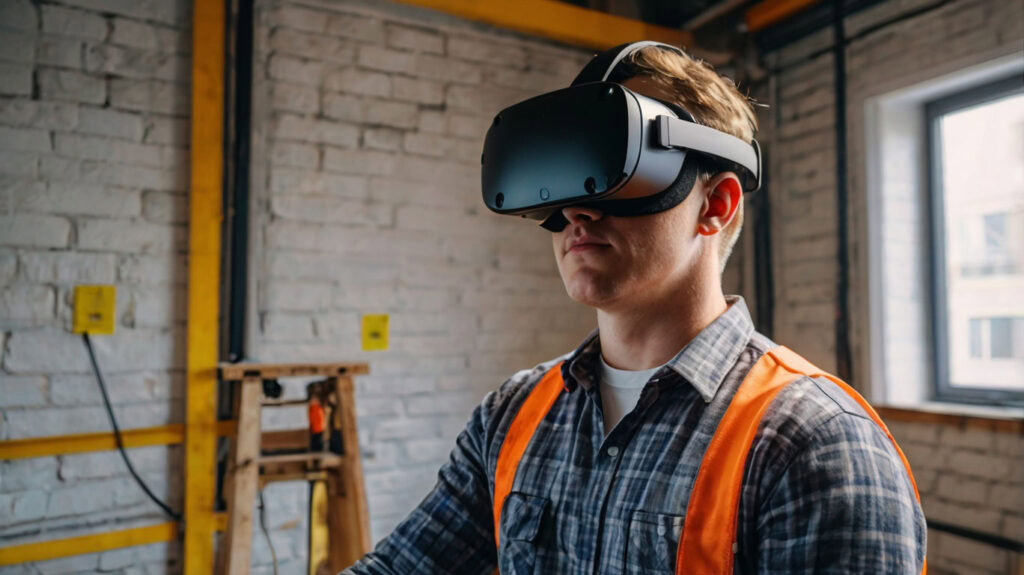VR training in construction
Building Skills Beyond Blueprints: VR Training in Construction
Introduction: The construction industry is witnessing a transformation fueled by Virtual Reality (VR) technology, revolutionizing how construction professionals train and prepare for the challenges of the job site. Virtual Reality training has emerged as a powerful tool in construction, offering immersive and risk-free learning environments. This article explores the profound impact of VR training in construction, examining its applications, benefits, and contributions to advancing safety and proficiency within the industry.
Advantages of Virtual Reality Training in Construction:
VR-based training enables construction workers, engineers, and architects to immerse themselves in realistic simulations of construction sites, equipment operation, safety protocols, and project planning. These simulations replicate on-site scenarios, offering a hands-on learning experience without exposing individuals to potential risks or hazards.
Simulating Construction Environments:
Construction professionals can practice tasks such as equipment operation, crane handling, scaffolding, and site management within virtual environments. This hands-on practice enhances familiarity with machinery, safety protocols, and workflow processes, promoting a safer and more efficient work environment.
Safety Training and Hazard Awareness:
VR simulations allow workers to train for hazardous situations, including identifying and responding to safety hazards, without actual exposure to risks. This enhances hazard recognition, emergency response, and safety protocols, fostering a safety-conscious workforce.
Project Visualization and Planning:
Architects and engineers leverage Virtual Reality technology for project visualization and planning. VR models provide a three-dimensional representation of designs, facilitating better communication among stakeholders and allowing for more informed decision-making during the design and planning phases.
Cost Efficiency and Skill Development:
Virtual Reality training reduces the need for expensive physical equipment and resources for training purposes. Additionally, it enables continuous skill development, offering a cost-effective alternative for repetitive or high-risk training scenarios.
Challenges and Future Prospects:
Despite its benefits, implementing VR training in construction encounters challenges, including initial costs, content development, and integration with existing workflows. However, ongoing advancements in VR technology and its increasing affordability indicate a promising future for wider adoption and more sophisticated training programs in the construction sector.
VR training stands at the forefront of revolutionizing construction education and safety. Its application in simulating construction environments, enhancing safety training, and aiding project visualization offers immense potential to elevate workforce proficiency and job site safety. As VR technology continues to evolve and become more accessible, its integration into construction training programs promises to drive a safer, more efficient, and innovative construction industry, setting new standards for excellence and safety across the sector.




